Czechoslovakia Pavilion
Czechoslovakia's pavilion, a world of enchantment where art, technology and industry was marvelously interwoven, was perhaps the most popular national pavilion at Expo. Its exhibits were sophisticated and presented brilliant and delightful audio-visual techniques where technology became art. Lines naturally were long; sometimes two or three hours.The pavilion's architecture was of supreme simplicity. Its walls were mainly of tinted glass on the ground level, and a solid screen of ceramic panels above. While plain, the beauty was reserved for the objects on display within.
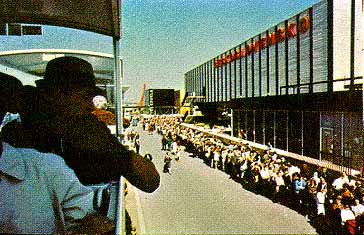
| A view of the Czechoslovakia pavilion from the mini-rail. |
Czechoslovakia, proud of its tradition, presented a breathtaking collection of ancient treasures in the Hall of Centuries, the first section of the exhibit. Here were gold and silver objects from the Great Moravian Empire (1200 years ago), Romanesque frescos, a replica of the ornate crown of Saint Wenceslas, King of Bohemia; objects from the Gothic period such as madonnas carved in wood and a 15th century manuscript, and works from the Renaissance, Baroque and more recent periods.
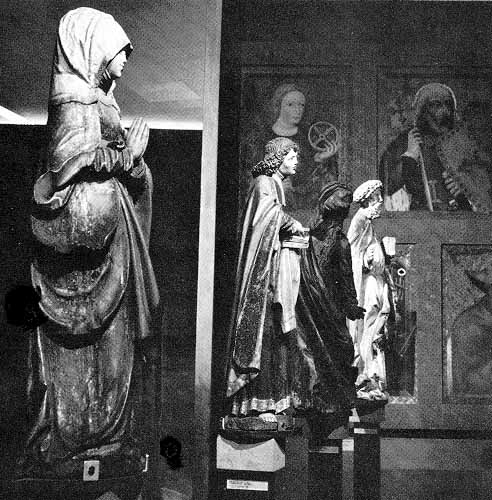 |
Hall of Centuries. |
In the Hall of Tradition, glass, crystal and ceramics were featured. Examples ranged from centuries old traditional to modern.
In the World of Children section was a stunning display of puppets designed by artist Jiri Trnka. Here puppet shows were presented with familiar tales of Grimm, Anderson and La Fontaine.
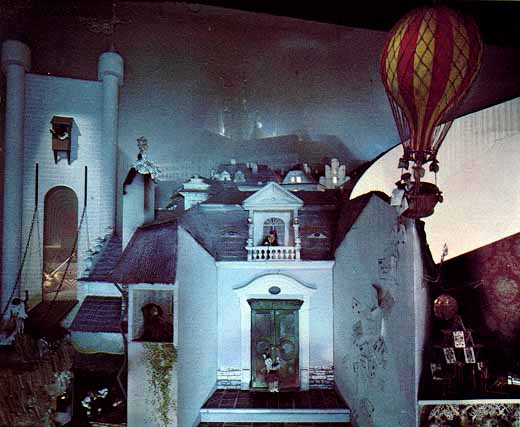 |
The World of Children puppet show area. |
In the same area was the Trebechovice Bethleham, an incredible wooden Nativity scene with some 2000 figures, 300 of them animated. It was carved by two humble craftsmen in Bohemia over a period of 40 years. A masterpiece of minute detail, it portrayed glimpses of everyday life in the 19th century. An exhibition of children's drawings, further on, brought a message of friendship from Czech children.
Nearby was an extraordinary multi-media show called Diapolyecran, a grandiose interpretation of the Creation. Spectators sat on a carpeted floor of a small auditorium before a wall 32 feet wide by 20 feet high, made up of 112 cubes, each two feet square. The cubes, each fitted with two slide projectors, glided backwards and forwards and changed pictures with split-second accuracy.
The subject was cosmic evolution and industrial progress. The pictures were ever changing where multiple pictures that made a much larger image, split then reassembled. Images flowed from volcanic chaos to green landscapes, from amoebae to insects to animals, from raw materials to gleaming machinery, from primate to Adam and Eve, and finally, to modern man in his contemporary world.
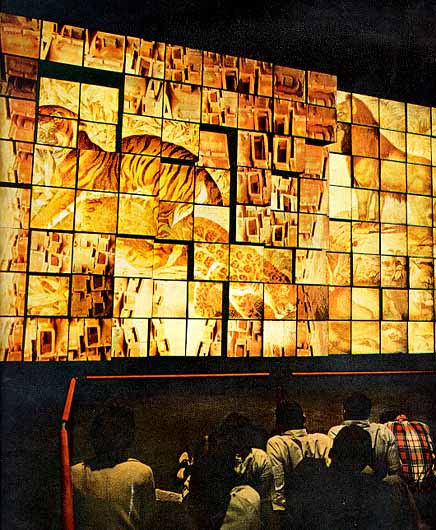 |
The multi-media show Diapolyecran enchanted visitors who sat on the floor to watch it. |
Another Czech sub-theme was "Inspiration." Models displayed the latest creations of their country's fashion designers in daily shows. Around them were displays of elegant materials and exquisite lace, displays of gold and silver jewelry.
Distressing modern problems of pollution and over-population were tackled in the next sub-theme "Conflicts." The visitor entered a small hall where he saw how nature had been ruined by carelessness. The question asked was how to achieve the more pleasant scene on the other side of the hall - wide open spaces, clear flowing rivers, planned urban centers and unspoiled countrysides. Models of water and air purification systems and models of an ideal suburb were presented.
 |
Outdoor sculptures in the courtyard. |
Kino-automat was an experimental theater where six times a day, groups of 127 spectators watched a 45 minute movie. As the cinematic tale unfolds, it poses a dilemma. Should he or shouldn't he? The film stops, the lights go up and the actor appears. The audience votes for the choice from buttons beside their seats and computers tally the scores on boards on the side of the screen. The film proceeds according to the choice made by the collective audience. Choices are made five times during the unique show.
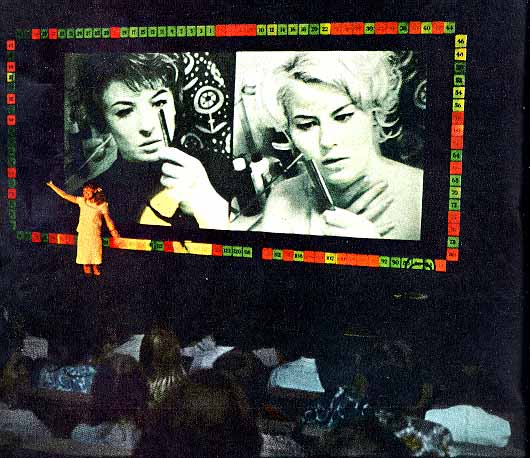 |
The film Kino-Automat allowed viewers to choose the movie sequence to follow. |
The pavilion offered a choice of four restaurants; Le Bistro for tasty snacks; the Prague for the famous Pilsener Urquell beer, Moravian sausages and Prague ham; the Bratislava Inn, a Slovak wine tavern; and the Castle Restaurant for gourmet cuisine in three luxurious salons.

| Mechanical fountain. Photo by Bill Dutfield |